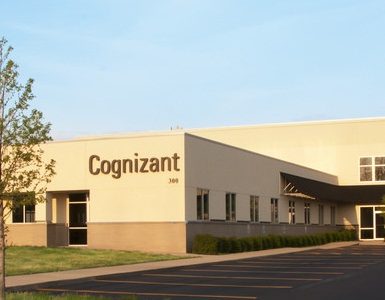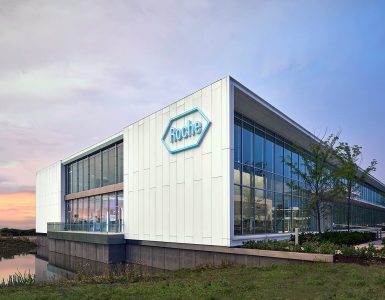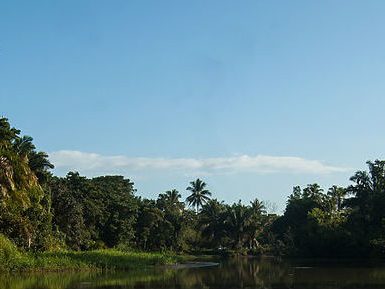Juan Salas, a successful entrepreneur, engineer, and researcher from Argentina, has migrated to Silicon Valley to flex his technical expertise and business acumen, all while being on the waiting list for a green card.
Hailing from La Plata, a small city in Argentina, Juan, 33, is currently the Managing Partner at Celerative, an innovation company that provides strategy consulting, market research, and software services to Latin America, the US, and Europe.
Juan’s eventual destination of the San Francisco Bay Area has needed much patience to reach, requiring years of experience and amassed expertise to prove his worth as a US resident.
Extraordinary Immigration
In order to fully integrate as a resident of the US, Juan applied for the EB1 Employment-Based Immigration visa, also known as the “alien of extraordinary ability” green card. This visa requires applicants to prove eligibility by providing evidence of certain achievements, such as material published about them in professional or major trade publication, scholarly articles written by them in similar publications, or judging the work of others, either individually or on a panel, among other criteria.
“I needed to meet 3 out of 10 criteria, so I submitted evidence for 6,” said Juan. “I had a profile related to academic studies from my past work in research, I started my own startup company, and I have a technical background, which was a triple-play. I also met the original contribution criterion, I was member of judging panel at a recognized society, and I possess a unique technical skill set.”
Juan was originally a software engineer, which he has combined with extensive research and knowledge of business administration and data science, all of which helped him obtain his O-1 visa – or at least be approved.
“I haven’t actually received the green card yet,” he laughed, explaining that, from the application stage to the approval from the USCIS, the whole process has so far taken around a year.
Early Education
Years before embarking on his journey into Silicon Valley, Juan started his education and technical career at a free, state primary school in Argentina, which had funding from the local community of parents to host extracurricular activities – one of which was “how to use computers”.

“At 10 years old I would attend the computing course every Saturday morning – that is where I first learned to code,” remembers Juan. “As I progressed through school I never left that world, and so started learning about how operating systems work, fiddling with security related things, just being a curious teenager really.”
After high school, it was obvious that Juan wanted to do a software engineering major, so he started a course in a private university, but something about paying for tuition just didn’t sit well.
“I was brought up in a state school, so I was more comfortable in a state university,” Juan recalled. “I couldn’t conceive being both a customer and a student; making payments before taking a test was odd for me. Ultimately, if they can make it harder to pass a test in order to keep you paying, they will do that.”
It was like the difference between day and night for Juan at the state university, as he felt he had the freedom to really pursue what he wanted to do. And high on that list? Learning German.
German Influence
“I applied for a scholarship in Germany, where I attended the Karlsruhe Institute for Technology,” Juan explained. “Karlsruhe is a small city, similar to La Plata, and is very centered on the local university. In fact, La Plata is geometrically designed, and one of the inspirations for the city grid was Karlsruhe.”
From a cultural perspective, Juan noted that people don’t take feedback personally in Germany, so criticism is welcomed, but in Latin cultures they tend to sugarcoat things so as not to offend people. Despite this obvious difference, Juan was comfortable with the critical approach, and flourished in Germany.

“My research was focused on integrating geospatial technologies into semantic web, which involves method for helping machines make sense of structured content on the web,” he said. “With geospatial data back then there was no consensus about how it should be presented, so my work was focused on researching best practices for that, and creating a unified language that could be followed.”
To meet the criterion of “original contribution” on his O-1 visa application, Juan actually submitted these papers and research that he worked on during his time in Germany. Even so, once his time in Germany was up, he headed back to Argentina where his entrepreneurial streak began.
Founding a New Company at Home
In 2012, when Juan returned from Germany, he founded Incodex, an agency focused on outsourced software coding. At the beginning, he was a one-man band, but things started to ramp up pretty fast once clients started rolling in.
“As more projects came in, I had to get an office, which ended up being in the storage room of a fashion shop,” he recalled. “At first, it was just me and some mannequins. Picture the first office from “Better Call Saul” and you’re imaging my workspace at the time.”
In 2015, Juan merged the company with his current co-founder’s company, Pablo Baldomá Jones, who was running Suyit at the time, another digital agency in La Plata. The two entrepreneurs met at the local IT chamber, Distrito Informático del Gran La Plata.
“We had similar work ethics, we wanted the same things, and we have complimentary profiles, so it made sense to merge our companies and form Celerative in 2015,” he said.

Since them, Juan, Pablo, and their company have been leveraging a natural symbiosis of biometric data and user experience, creating a biometric lab to focus on these connections. The company is also working on VR, data science, and machine learning for high profile customers in fintech, media, and AI, leading him to his new life in the United States.
Uprooting to Live the Dream
Now that Juan is getting settled in Silicon Valley, he has some advice for other young entrepreneurs with similar ambitions.
“Find your passion, and the rest will follow,” he said. “Don’t come to the US just for the sake of coming, but find something you really want to do, and do it. Also, never forget where you come from: if you make it abroad, your native culture will help to make personal connections, so bring it with you.”
On a professional level, Juan has found that the Silicon Valley community is highly engaging; there is always something going on and always interesting people to talk to.
On a more personal level, Juan enjoys the local landscape, the mountains, and the sea.

“I’m into kitesurfing, so I’m pleased about how easy it is to go out on the water straight after work,” he said. “Argentina has water but everything is so far away, compared to the Bay Area where everything is condensed within a few square miles.”
Along with his time on the water, Juan enjoys playing guitar, snowboarding, sailing, and riding his electric skateboard to work. He has also brought his Argentinian culture to the table, sharing asado and empenadas home made on his grill, explaining that his hard work over the years has really paid off.
“Moving to a new countries always presents a challenge, but at the same time it’s a dream come true, so I highly recommend that people put the work in and give it a shot.”










Add comment